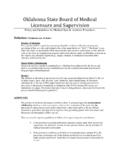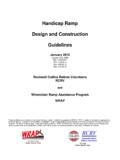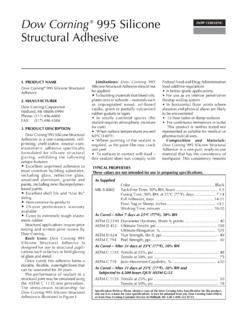Transcription of SIMPLIFYING VENOUS LEG ULCER MANAGEMENT A a Bb c …
1 CONSENSUS RECOMMENDATIONS. SIMPLIFYING VENOUS LEG. ULCER MANAGEMENT . A. a Bc A ssessment and Diagnosis b c B est practice wound and skin MANAGEMENT C ompression therapy Recommendations from an expert working group PUBLISHED BY: Wounds International FOREWORD. Enterprise House Many countries have published guidelines, which state that compression therapy is the 'gold 1 2 Hatfields London SE1 9PG, UK. standard' treatment for VENOUS leg ulcers1 11. Compression therapy is known to significantly Tel: + 44 (0)20 7627 1510 increase VLU healing rates and reduce the risk of recurrence12 13. Despite this, efforts to heal Fax: +44 (0)20 7627 1570 VLUs are often focused on the use of advanced wound dressings and other therapies, while an established key to healing compression therapy is underused. An international group of experts in leg ulcers and VENOUS disease met in December 2014.
2 The Wounds International 2015 group recognised that a very high proportion of all leg ulcers have VENOUS disease as a causative or contributory factor ( are VLUs or mixed aetiology ulcers) and so may be appropriate for compression therapy. Their discussions centred on identifying how to encourage wider adoption of compression therapy by SIMPLIFYING the key principles involved. The conclusions reached form The consensus meeting and the basis of this document and are presented as an ABC of the MANAGEMENT of VLUs, with the this document have been focus on the active treatment phase. It is hoped that this simplified approach will help clinicians supported by 3M Health Care. to clearly understand why, when and how compression therapy should be used. The views in this document do Everyone involved in wound healing should be ambitious in striving for a step change that not necessarily reflect those of decisively overturns passivity in expecting lengthy, delayed or non-healing of VLUs and other leg 3M Health Care.
3 Ulcers associated with VENOUS disease. We need to actively seek to enhance affected patients'. lives by improving healing rates through increased appropriate use of compression therapy. Professor Keith Harding How to cite this document: EXPERT WORKING GROUP. Harding K, et al. SIMPLIFYING Keith Harding (Chair), Medical Director, Welsh Wound Innovation Centre, and Dean of Clinical Innovation, Cardiff VENOUS leg ULCER MANAGEMENT . University, Wales Consensus recommendations. Caroline Dowsett, Nurse Consultant, Tissue Viability, East London NHS Foundation Trust, London, UK. Wounds International 2015. Available to download from Lore Fias, Thoracic and Vascular Surgeon, Department of Thoracic and Vascular Surgery, University Hospital Antwerp, Belgium Rolf Jelnes, Wound Center, Medical Center, Sygehus Soenderjylland, Soenderborg, Denmark Giovanni Mosti, Head, Angiology Department, Clinica MD Barbantini, Lucca, Italy Rut ien, Associate Professor/General Practitioner, Blekinge Wound Healing Centre, Blekinge Hospital, Karlshamn, Sweden Hugo Partsch, Emeritus Professor of Dermatology, Medical University of Vienna, Austria Suzan Reeder, Dermatologist, Department of Dermatology, Albert Schweitzer Hospital, Dordrecht, Netherlands Patricia Senet, Service de Dermatologie, UF de Dermatologie Vasculaire, H pitaux Universitaires Paris Est (AP-HP)
4 , Paris, France Jos Verd Soriano, Professor, Department of Community Nursing and Preventive Medicine, Public Health and History of Science, Faculty of Health Sciences, University College of Nursing, University of Alicante, Spain Wolfgang Vanscheidt, Specialist in Dermatology Phlebology Allergology, Freiburg, Germany REVIEWERS. David Keast, Center Director, Aging Rehabilitation and Geriatric Care Research Centre, Lawson Health Research Institute, Parkwood Institute, London, Ontario, Canada Terry Treadwell, Medical Director, Institute for Advanced Wound Care, Montgomery, Alabama, USA. VENOUS leg ulcers and compression THE CHALLENGES. DEFINING A VLU. A VENOUS leg ULCER (VLU). VENOUS leg ulcers (VLUs; also known as varicose or stasis ulcers) pose significant challenges to is an open skin lesion patients and healthcare systems: they are frequent, costly to manage, recurring, and may persist that usually occurs on for months or years (Box 1).
5 The medial side of the lower leg between the Patients report that having a VLU has a negative impact on all aspects of daily living, and may ankle and the knee as a result of chronic VENOUS cause depression, anxiety and social isolation. Pain, leaking exudate, odour, restricted mobility insufficiency (CVI) and and sleep disturbance may be particularly challenging and distressing for patients 14,15. ambulatory VENOUS hypertension, and that Many guidelines produced by national and international groups emphasise the importance of shows little progress compression therapy in the MANAGEMENT of VLUs1 11. towards healing within 4 6 weeks of initial occurrence. Compression therapy is widely recognised as key to the MANAGEMENT of VLUs: it increases healing rates in comparison with no compression therapy12 and, after healing, reduces recurrence rates13.
6 BOX 1 | VENOUS leg ULCER key facts Incidence and prevalence About 1% of the western population will suffer from a VLU during their lifetime12. At any one time approximately of the population have an active VLU4. Prevalence increases with age, affecting up to 2% of the population >80 years old16,17. More common in women than in men17. Few countries have registries that collect data on prevalence and incidence routinely*. Healing rates 6 month healing rates: community about 45%18; specialist clinics about 45 70%19,20. Average time to healing: months for VLUs; months for mixed aetiology ulcers21. Recurrence 12 month recurrence rate: 26 69%13; recurrences have been reported up to 60 months4. Direct financial cost In western countries, about 1% of healthcare budgets is consumed by the MANAGEMENT of leg ulceration22.
7 In the UK, VLUs cost 168 198 million per year23. In Germany, annual average cost of illness for a patient with a leg ULCER has been estimated at 9060 Euros24. Time consuming Wound care has been estimated to consume 25 65% of the time of community nurses25,26. Family physicians see an average of patients with a chronic leg ULCER per week (survey had low response rate)26. Inconsistent patterns of care VLUs may be managed by a number of different specialities, with inconsistencies between and within different countries in referral criteria and patterns Care may be driven by government targets/incentives in some countries *An example of a registry which is used in Sweden can now be found at SIMPLIFYING VENOUS LEG ULCER MANAGEMENT | 1. Despite existing guidance, many patients with a VLU do not receive compression therapy.
8 In the UK, only 20% of patients in a primary care database who had a VLU were recorded as having received compres- sion therapy17. In a French study, only of general practitioners followed guidelines for the manage- ment of VLUs28. In contrast, in specialist centres compression therapy may be used in up to 88% of VLU. patients25. In Germany, an insurance company reported that 32 53% of VLU patients received compres- sion therapy21. Under-usage of compression therapy represents lost opportunities for healing wounds and improving patients' quality of life. There are numerous reasons why compression therapy may not be used (Figure 1). These range from lack FIGURE 1 | Reasons of knowledge or confidence by clinicians, to unclear referral pathways because of the variety of special- for under-usage of ties that may be involved, to local unavailability of compression bandages or hosiery, to unwillingness of compression therapy patients to wear compression therapy.
9 Healthcare system Reimbursement for compression bandages and/or hosiery is unavailable Where most compression types are reimbursed, the wide choice available may lead to: confusion over the indications for each type inconsistent and possibly incorrect use of compression therapy Cost-effectiveness arguments for the use of compression therapy are not acknowledged by the healthcare system Lack of financial incentives to use compression therapy, a consultation is paid at a flat rate with no additional payment available for undertaking compression therapy Lack of specialist service for patients who require additional assessment or who may require adaptations of compression therapy to take into account additional needs, peripheral arterial disease or diabetes Clinician Lack of knowledge: in diagnosing and categorising VLUs and other leg ulcers associated with VENOUS disease that compression therapy is the cornerstone of VLU MANAGEMENT and improves healing and prevents recurrences of different compression systems Views all forms of compression therapy as the realm of a specialist and beyond their scope Lack of skill or confidence in application of compression therapy resulting in suboptimal compression Lack of time.
10 Short appointment times may not provide sufficient time for assessment of VENOUS disease and application of appropriate compression Unclear referral pathways for further assessment if required or if the clinician is uncertain about whether or how to implement compression therapy Patient Lack of understanding of the purpose of and need for compression therapy Where payment by the patient is required, the patient cannot afford compression therapy Negative previous experience of compression therapy, pain, bandage slippage, exudate leakage Lack of access to a clinician with the knowledge and skills required to safely prescribe and implement compression therapy Unwillingness to wear bandages or hosiery for aesthetic or practical reasons Inability to attend appointments, due to lack of transport or because of work commitments 2 | WOUNDS INTERNATIONAL CONSENSUS.







